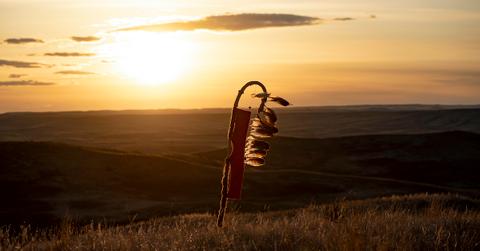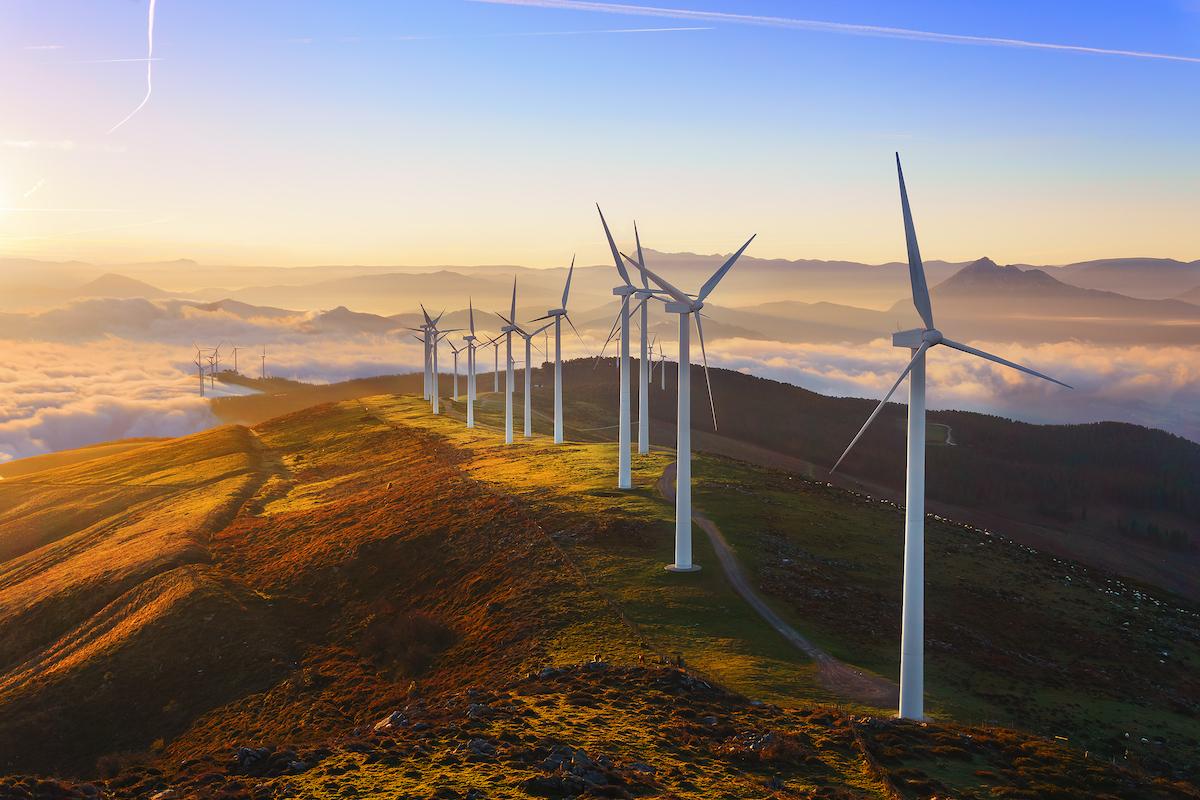Standing Rock Sioux Tribe Is Building a Wind Farm on Their Reservation
The Standing Rock Sioux Tribe is building a wind farm on their reservation in North Dakota.
Updated Sept. 14 2020, 9:37 a.m. ET

It’s hard to discuss the Dakota Access Pipeline without also discussing the Standing Rock Sioux Tribe, who passionately protested the controversial oil pipeline unjustly being built on their land for years. Now, following a temporary shutdown of the pipeline, the Standing Rock Sioux Tribe is building a wind farm, so they can “leave a legacy on [their] native land” — and it will be a groundbreaking project in so many ways.
The Standing Rock Sioux Tribe is building a wind farm called Anpetu Wi.

SAGE Development Authority (Strategic, Advancement, Goals, and the Environment), a public power authority created by the Standing Rock Sioux Tribe, is managing the development of the wind farm. Named Anpetu Wi (which translates to “the breaking of the new day” or “morning light” in the Lakota language), the 235-megawatt wind farm will be built on the Standing Rock Reservation, between Porcupine and Fort Yates, N.D., where many of the Standing Rock Sioux Tribe’s Lakota and Dakota people live.
“The project represents a community development model to produce renewable energy that offers a path toward self-determination and sovereignty for Standing Rock and other Native nations,” SAGE said in a statement sent to Green Matters.
According to SAGE, Anpetu Wi is the first tribally-owned public power wind farm to get this far in the development process in the U.S. — but for the wind farm to actually complete construction and provide power to the North Dakota community, help is needed. So far, the Standing Rock Sioux Tribe has raised about $2 million from nine philanthropic foundations (including the Sierra Club), which was mostly used to establish SAGE. Now, SAGE is entering its next fundraising step, with a goal of raising $1.5 million for Phase One of the construction process.
Ultimately, an estimated total of $325 million will be needed to get the wind farm up and running. You can donate to help the efforts on the official Anpetu Wi website, which is also filled with resources.
“We are proud to achieve another milestone in our quest to create a model for self-determination and economic development not only for our people but for all Native communities,” Joseph McNeil Jr., General Manager of SAGE and a member of the Standing Rock Sioux Tribe, said in a statement.
“For our people and me, this project is a prayer. It allows us something to leave behind for future generations of the Standing Rock Sioux Tribe and reflects our cultural values by prioritizing people, land, and nature over profit,” McNeil Jr. continued. “Our model certainly includes investors, but also allows us to benefit directly from its revenue for hundreds of years to come.”
“Developing renewable energy resources—for export as well as local consumption—will foster badly needed economic development on the Reservation and provide employment and skills training,” added Fawn Wasin Zi, SAGE Board Chair.
Did the Dakota Access Pipeline get shut down?
In early July 2020, a federal judge ordered Dakota Access Pipeline operators to shut down and clear out the Dakota Access Pipeline by Aug. 5, until it could pass an environmental review, according to The Hill. On Aug. 5, a federal appeals court reversed the order, allowing the pipeline to remain in business, as per the AP.
Why is the Dakota Access Pipeline bad?
The Dakota Access Pipeline has been transporting 570,000 barrels of oil across the U.S. every day since June 2017, a few months after Trump was sworn in and signed an executive order approving the pipeline. In addition to running underneath the Standing Rock Sioux Tribe Reservation, the pipeline also runs along other Indigenous sites across the Midwest, threatening to severely pollute drinking water for many communities.
Indigenous tribes and allies have protested the pipeline since it was first announced in 2014, and the movement is known as #NoDAPL.
Not only will the Anpetu Wi wind farm produce renewable energy for the Standing Rock Sioux Tribe and the local community, but its construction also sends a strong message to the powers behind the Dakota Access Pipeline.